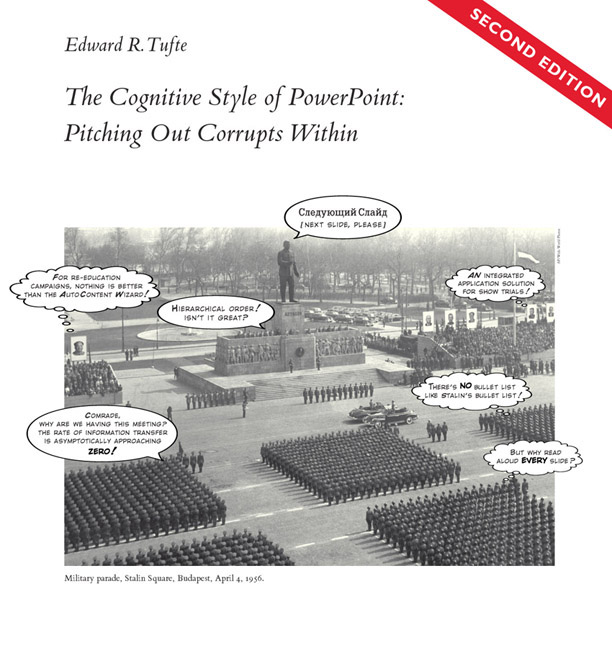Sep
2015
Death by PowerPoint
How PowerPoint is killing critical thought
Bored students is the least of it – the bullet point-ization of information is making us stupid and irresponsible
The genesis story runs like this: from the late 1950s corporations began to realise that, rather than going to the trouble of developing new products they hoped would meet a need, they could use marketeers to create the perception of need, then develop products to meet it (a shift brilliantly dramatised in the TV series Mad Men). To do this, different departments had to be able to speak to each other, to sell ideas internally. So while there had always been meetings, now there were meetings about meetings and – hey presto! – the modern world was born.
The presentational precursor to PowerPoint was the overhead projector, which is why PP screens are still called “slides”. The program owes most to Whitfield Diffie, one of the time lords of online cryptography, but it was quickly snapped up by Microsoft. Its coding/marketing roots are intrinsic to its cognitive style, being relentlessly linear and encouraging short, affirmative, jargonesque assertions: arguments that are resolved, untroubled by shades of grey.
It’s no coincidence that the two most famous PowerPoint presentations are: a) the one presented to Nasa managers by engineers, explaining with unarguable illogic why damaged tiles on the space shuttle Columbia were probably nothing to fret about; and b) General Colin Powell’s equally fuzzy pitch for war with Iraq. Now, blaming PowerPoint for Iraq would be a bit like blaming Darwin for Donald Trump, but the program made scrutiny of the case harder. Not for nothing did Brigadier General McMaster, of the US military, subsequently liken the proliferation of PP presentation in the military to an “internal threat”, saying: “It’s dangerous because it can create the illusion of understanding and the illusion of control. Some problems are not bullet-izable.”
More on the topic in this blog:
https://blog.stcloudstate.edu/ims/2013/11/11/death-by-powerpoint/
maximise PowerPoint’s true potential.
Course content
- An introduction to the principles of data visualisation
- Storytelling with PowerPoint
- How to design using PowerPoint
- Creating compelling narratives
- Practical exercise: create a sample slide using pen and paper
- Tools and further reading
- Q&A and group discussion
